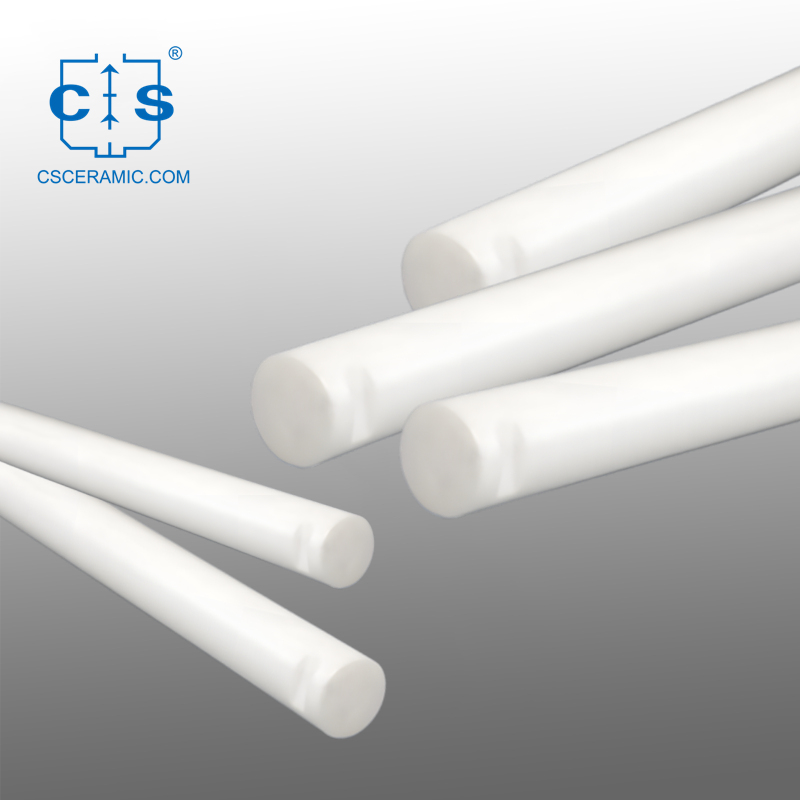A notable characteristic of alumina ceramic rods lies in their remarkable hardness, ranking second only to diamond according to the Mohs scale. This superior hardness endows them with the ability to endure significant wear and abrasion, rendering them ideally suited for applications that necessitate robust resistance to mechanical stress. Moreover, alumina ceramic rods possess outstanding compressive strength, empowering them to support heavy loads without diminishing their structural soundness.
Additionally, these rods display exceptional chemical resilience, enabling them to withstand the harsh effects of various corrosive substances, acids, and alkaline solutions. Consequently, they are highly sought after in the chemical processing industry, where they are utilized in crafting equipment and components that must perform reliably in severe chemical environments.
The electronics industry is another sector that heavily relies on the exceptional properties of alumina ceramic rods, utilizing them in a wide range of applications that are essential for the proper functioning of electronic devices and systems.
One of the primary uses of alumina ceramic rods in the electronics industry is as electrical insulators. These rods exhibit exceptional dielectric strength and low thermal conductivity, making them ideal for use in the production of various electrical components, such as capacitors, transformers, and circuit breakers. Their ability to effectively insulate and isolate electrical currents is crucial for ensuring the safety and reliability of electronic systems.
In addition to their use as electrical insulators, alumina ceramic rods are also employed in the manufacture of substrate materials for printed circuit boards (PCBs) and integrated circuits. The high thermal and mechanical stability of these rods, combined with their excellent electrical properties, make them an ideal choice for the production of high-performance electronic components that must withstand the rigors of modern electronic systems.
Furthermore, alumina ceramic rods are used in the production of various electronic packaging and enclosure components, such as housings, covers, and sockets. Their exceptional resistance to thermal shock, chemical corrosion, and mechanical wear ensure that these critical components can reliably protect and support sensitive electronic devices, even in demanding operating environments.
Beyond their use in electronic components and devices, alumina ceramic rods also find application in the production of specialized electronic equipment, such as high-power radio frequency (RF) and microwave components. The exceptional thermal stability and low dielectric loss of these rods make them an ideal choice for use in the manufacture of waveguides, antennas, and other RF-related components, ensuring optimal performance and efficiency in high-frequency electronic systems.
The versatility and reliability of alumina ceramic rods have made them an indispensable material in the electronics industry, where their exceptional properties contribute to the development of increasingly sophisticated and reliable electronic devices and systems.
In conclusion, alumina ceramic rods have emerged as a cornerstone material in various industries, particularly in the electronics sector, owing to their unparalleled combination of properties. Their remarkable hardness, superior compressive strength, and exceptional chemical resilience have not only positioned them as a preferred choice in chemical processing but also enabled them to play a pivotal role in the advancement of electronic technology. From electrical insulation and substrate materials to packaging components and specialized RF equipment, alumina ceramic rods continue to demonstrate their versatility and reliability, driving the development of more sophisticated and dependable electronic devices and systems. As technology continues to evolve, alumina ceramic rods remain an indispensable material, contributing significantly to the progress and innovation of the electronics industry.




 info@csceramic.com
info@csceramic.com








 +86 18273288522
+86 18273288522